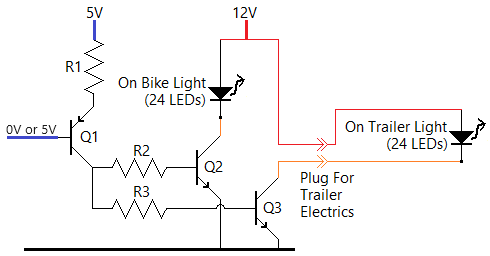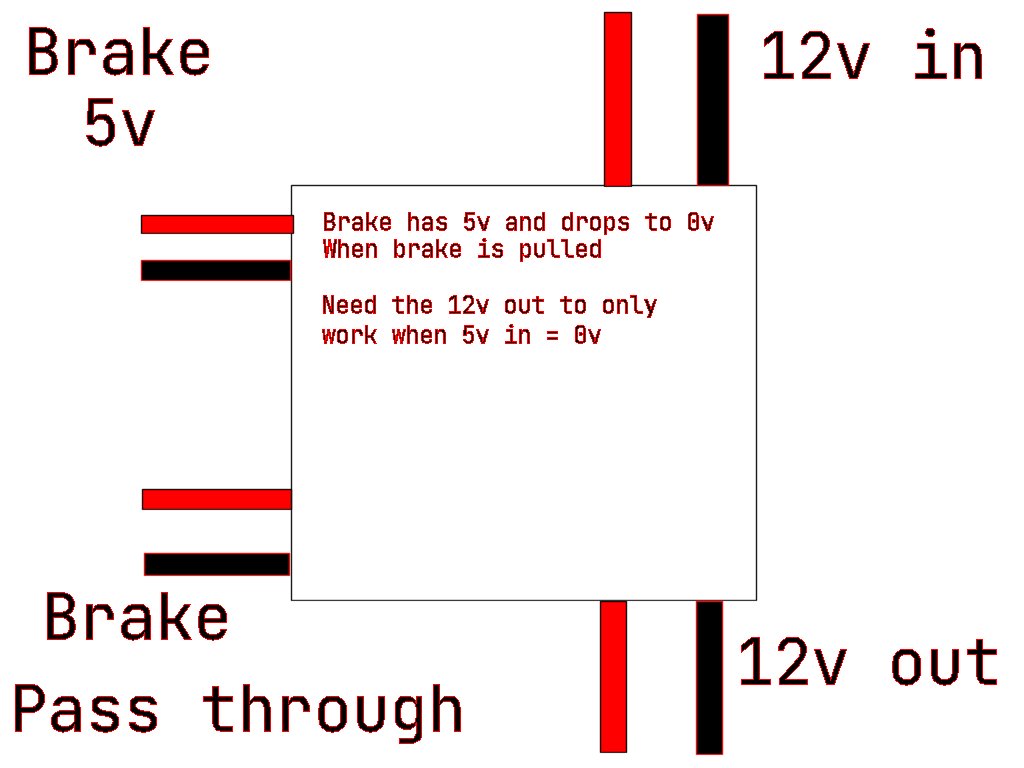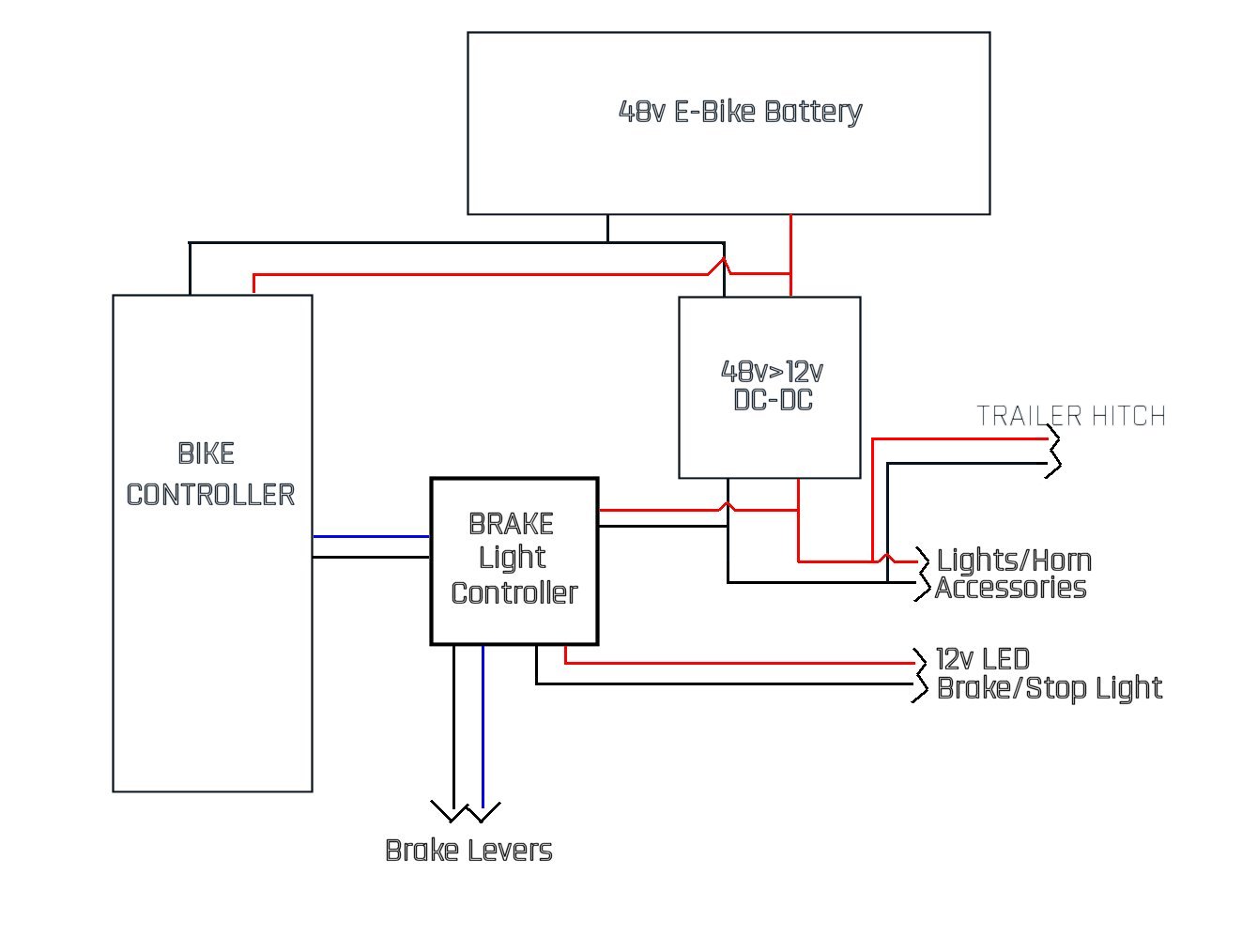Q2 and Q3 are 2N2222A. In TO-18 package. They are 600 mA maximum current and 1.8 W maximum heat disipation at 25°C.
At 417 mA, V
SAT is 1V = 0.417W. Assuming the circuit will be in an enclosure, and you'll ride on warm days the transistor temperature will be higher; the maximum dissipation must be derated. TO-18 heat sinks cost more than the 2N2222As, but ensure better cooling. They look like:

- TO18HeatSink.png (6.22 KiB) Viewed 32297 times
Minimum gain of 2N2222 at 150 mA is 100, at 500 mA is 40. For our 417 mA I'll call it 45. Making the resistors the next lower standard will ensure saturation. R2 and R3 may not be necessary, but will compensate for different gains of Q2 and Q3, and actual current of LED assemblies.
So current in each of R2 and R3 will be:
417 mA / 45 = 9.3 mA
Current in R1 with trailer connected:
9.3 mA * 2 = 18.6 mA
Resistors R2 and R3:
1 V / 9.3 mA = 107.5 Ω. Standard value for R2 and R3 = 100 Ω.
1 V * 10 mA = 0.01 W. 1/8 W or larger is okay. (or even smaller, but SMD is hard to work with by hand)
Worst case V
BE of 2N2222a is 1.2 V, and V
CE of 2N3906 (suggested Q1) is 0.4V, 1 V of R2 and R3.
Voltage across R1:
5 V - 1.2 V - 1 V - 0.4V = 2.4 V
Resistor R1:
2.4 V / 18.6 mA = 129.03V. Standard value for R1 = 120 Ω.
2.4 V * 18.6 mA = 0.045W. 1/8 W again okay.
(For closer calculations the base/emitter current would be added to the collector/emitter current. I considered insignificant compared to the reductions to standard resistor values.)
Q1 base current:
18.6 mA / 75 = 248 μA. Should be insignificant to the controller.

- NV_LED.png (9.21 KiB) Viewed 32297 times

